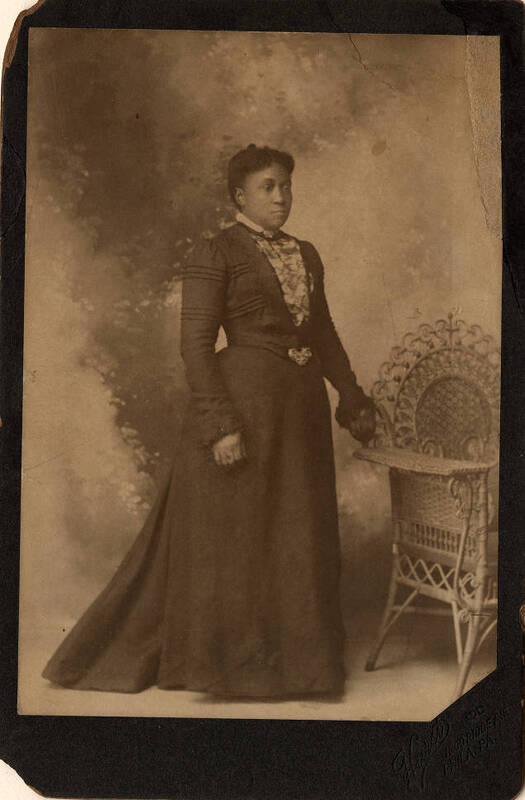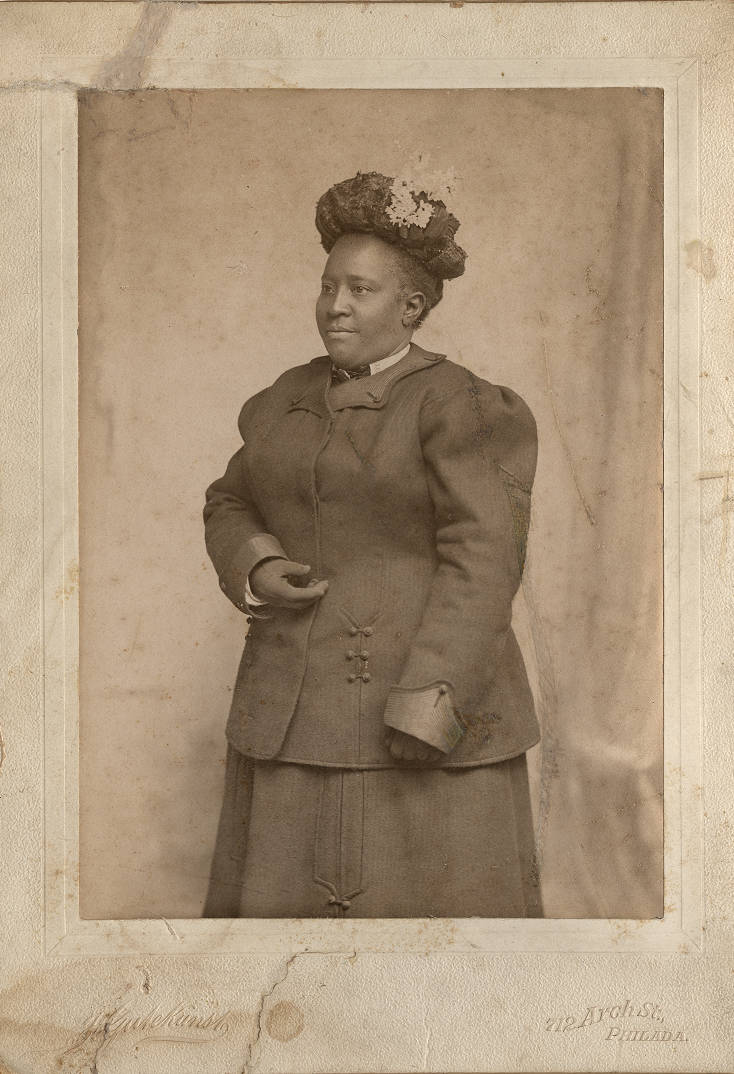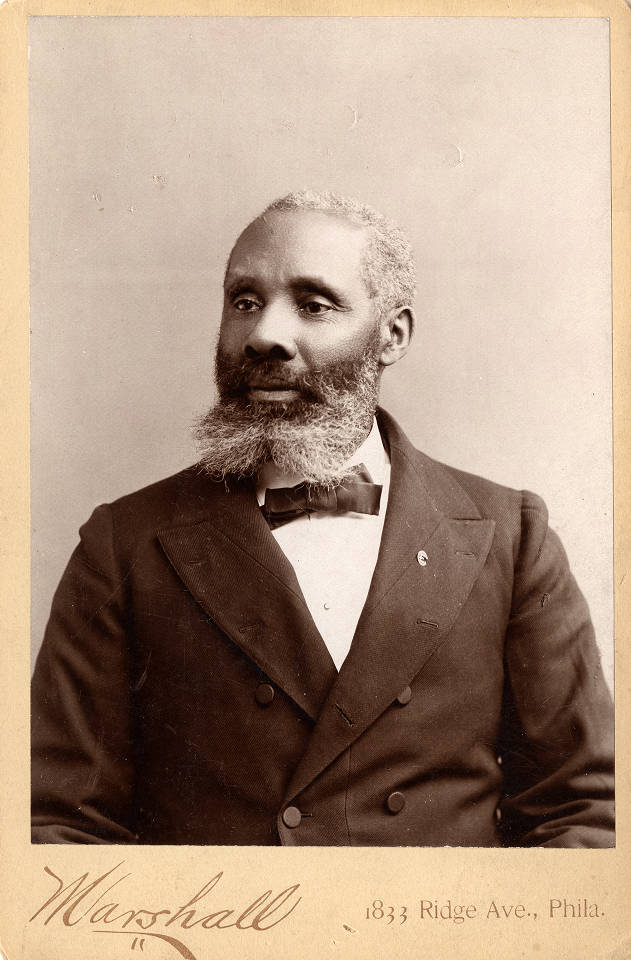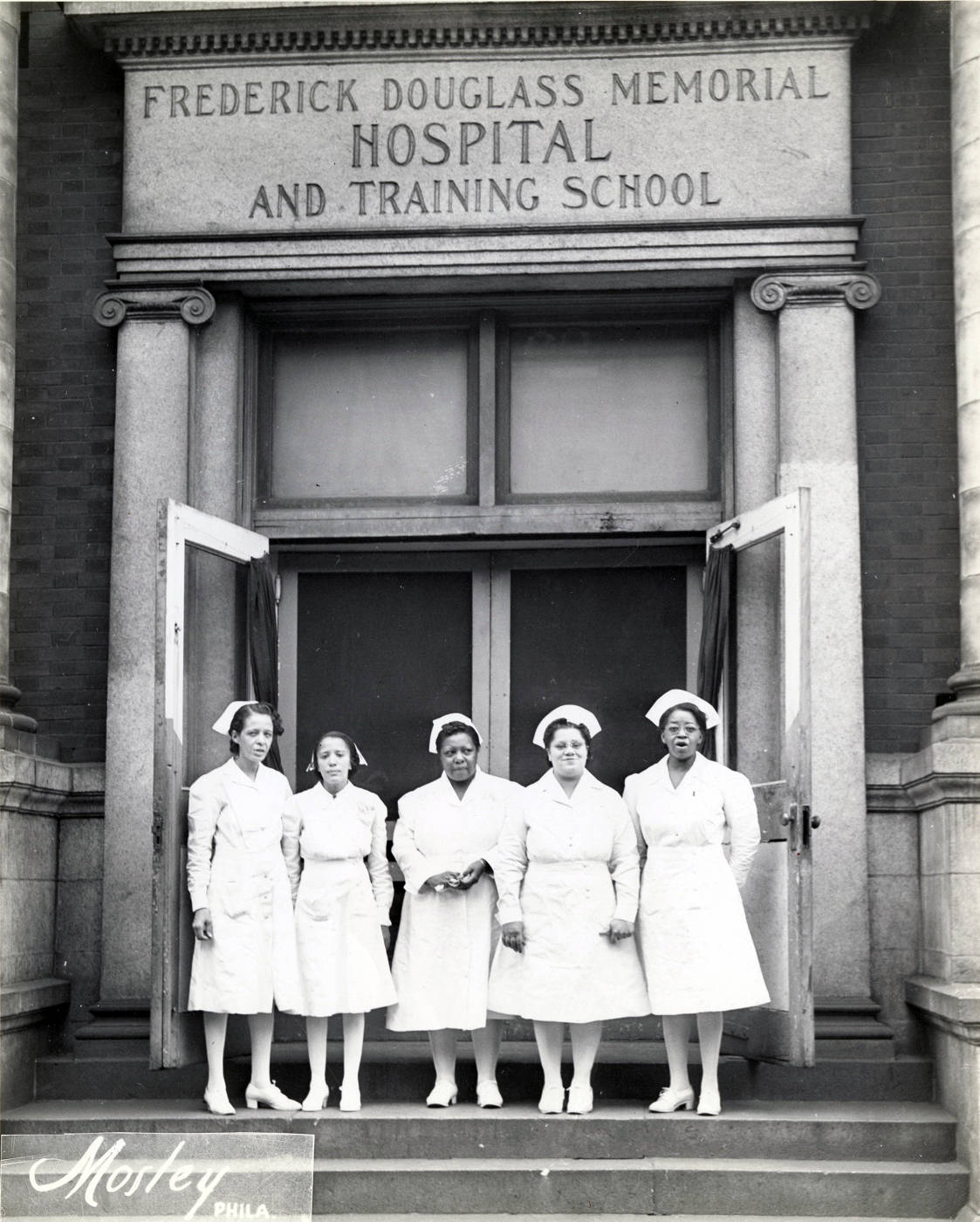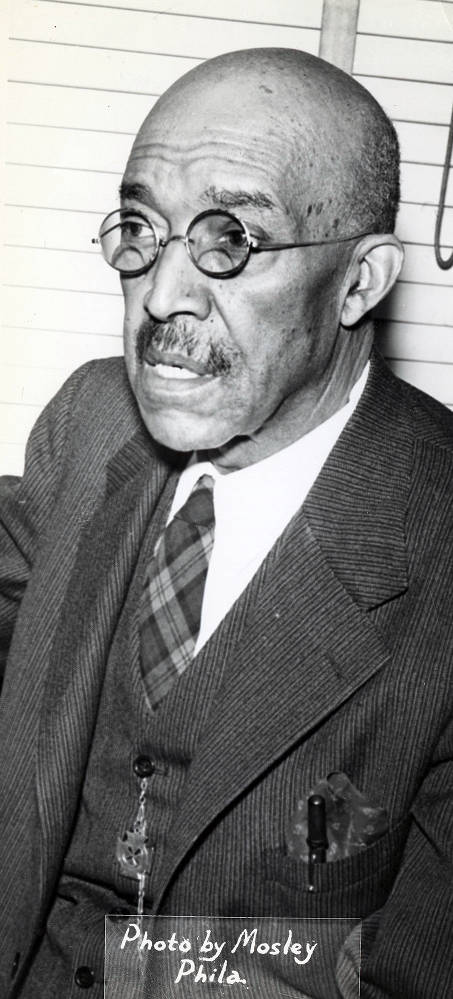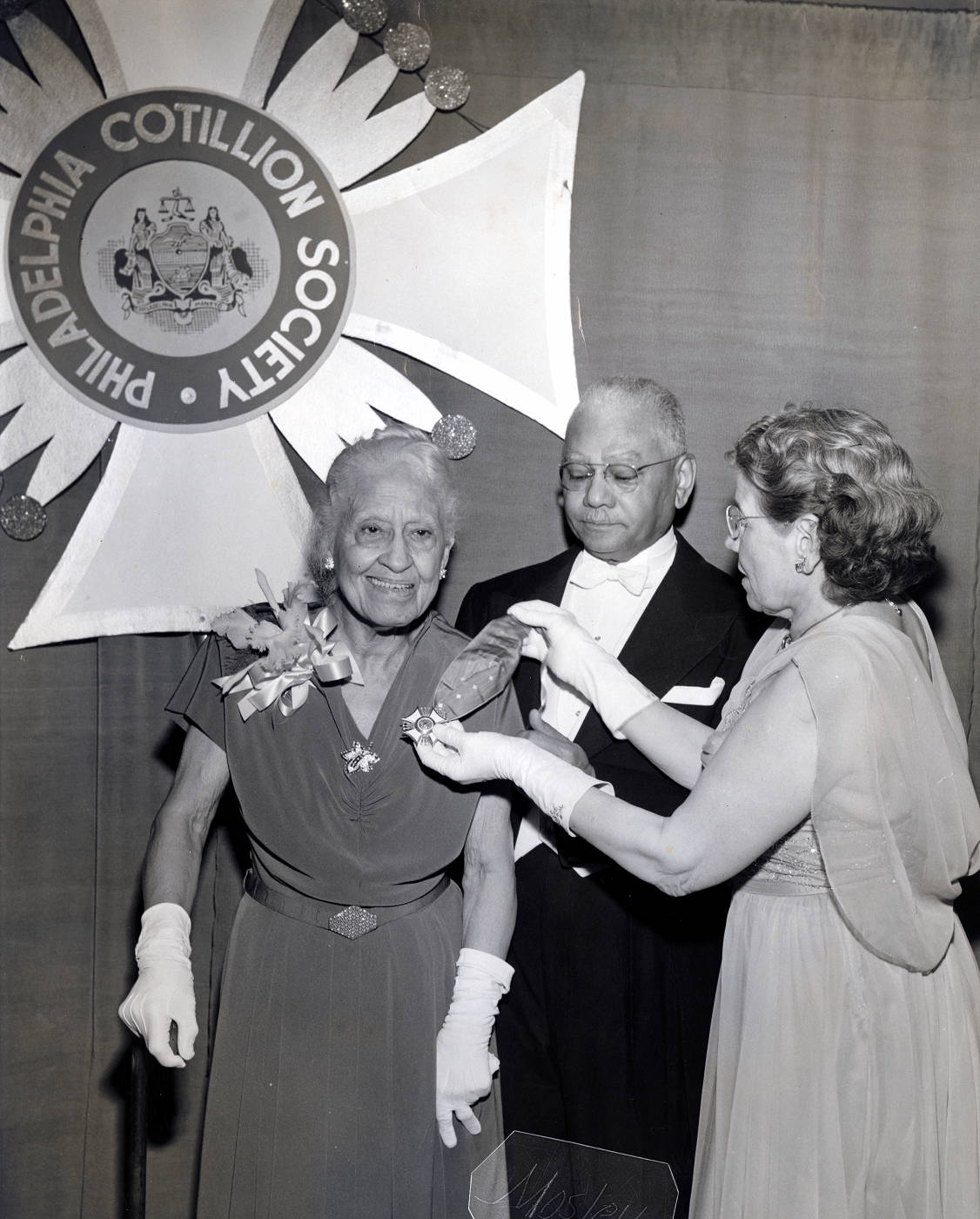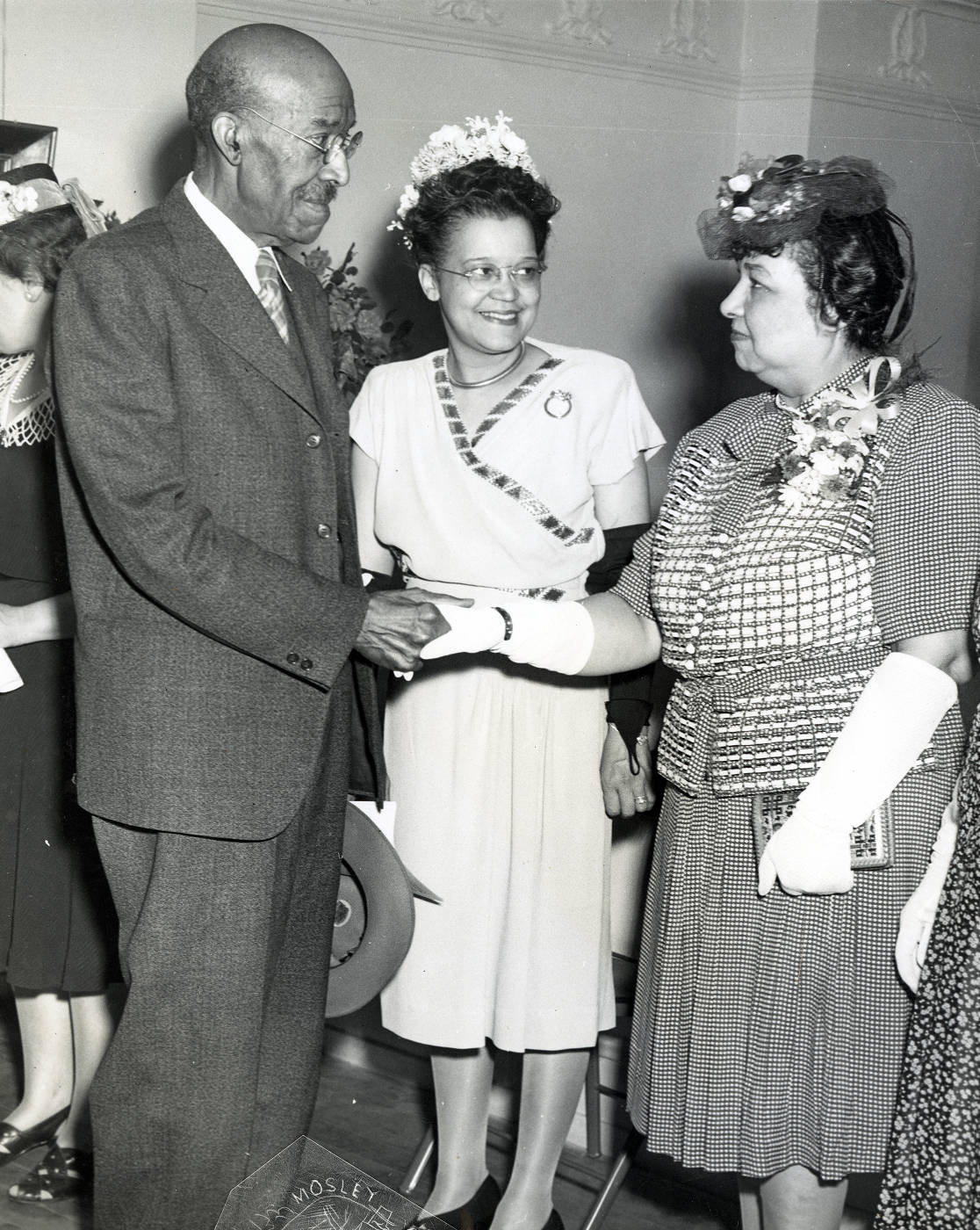The Life and Times of Caroline Still Anderson
| Year | Local Events | National Events |
|---|---|---|
| 1847 | November 1: Caroline Virginia Still, daughter of Letitia and William Still, is born in Philadelphia, Pennsylvania on November 1. | On July 26, free Blacks, from the United States, adopted and signed the Liberian Declaration of Independence. |
| 1864 |
Caroline Still entered Oberlin College at the age of fifteen years old. |
Charlotte Forten published her account "Life on the Sea Islands" about her teaching experiences as an African American northerner who went south to teach former slaves. Sculptor Edmonia Lewis created a bust of Robert Gould Shaw, who led the Massachusetts Fifty-Fourth Colored Regiment in the assault of Fort Wagner durnig the Civil War. |
| 1868 | Caroline Still is the youngest member of the graduating class at Oberlin College. | |
| 1869 |
December 28: Caroline Still married Edward A. Wiley, a formerly enslaved African and a fellow classmate at Oberlin, at her parents’ residence. Elizabeth Taylor Greenfield performed at Caroline’s wedding reception that was attended by prominent Blacks like Robert Purvis, Sarah Mapps Douglass and William Whipper as well as white abolitionist Lucretia Mott. |
Ebenezer Don Carlos Bassett is appointed to the post of Minister Resident of the United States to Haiti, becoming the first African American appointed diplomat. Biographer Sarah Bradford published Harriet Tubman: The Moses of Her People with the proceeds funded an elderly home founded by Ms. Tubman. |
| 1872 | Caroline Still Wiley attended lectures in physiology at the Woman’s Medical College of Pennsylvania. | Frances Ellen Waktins Harper's Sketches of Southern Lifeis published. |
| 1874 |
Caroline’s husband, Edward Wiley, died, leaving her with two children, William and Letitia, named after her parents. Caroline Still Wiley moved to Washington, D.C. to attend Howard University College of Medicine. She taught drawing and elocution to support her family. |
Annie Wittenmyer founded the Woman's Christian Temperance Union. |
| 1875 |
Caroline moved back to Philadelphia and matriculated at the Woman’s Medical College of Pennsylvania. |
Sophia Smith founded and endowed, Smith College, a women's college, chartered in 1871 and opened. |
| 1878 |
Caroline Still Wiley graduated from Woman’s Medical College of Pennsylvania with a degree of Doctor of Medicine. She and Georgianna E. Young were the only African Americans to graduate in the 1878 class. Since 1867 when Rebecca Cole graduated, they were the first Blacks to graduate the school. |
The Susan B. Anthony Amendment - to grant women the vote - is introduced in the U.S. Congress. |
| 1879 |
Caroline Still Wiley interned at New England Hospital for Women and Children in Boston, Massachusetts for one year. Caroline returned to Philadelphia and established a practice. |
Lewis Latimer received a patent for an electric filament bulb. |
| 1880 |
Lydia Maria Child, abolitionist and writer, died on October 20. Quaker abolitionist and women's rights advocate Lucretia Mott died on November 11. |
|
| 1888 |
Caroline served as treasurer for the alumni association of the Woman’s Medical College of Pennsylvania. |
During April 1888, Frederick Douglass gave a speech before the International Council of Women, in Washington, D.C. |
| 1892 |
Frances Ellen Watkins Harper published her novel entitled Iola Leroy. |
Soprano Sissieretta Jones, called “Black Patti,” performed at the White House for President Benjamin Harrison. Elizabeth "Bessie" Coleman, the first African American female pilot, is born January 26. |
| 1894 |
Gertrude E.H. Bustill Mossell’s book The Work of the Afro-American Woman is published. |
National Association of Colored Women started the publication of The Woman's Era |
| 1895 |
|
|
| 1896 |
Ethel Waters, vocalist and actress, was born on October 31 in Chester, PA. |
The U.S. Supreme Court legalized segregation in the case of Plessy v. Ferguson. Mary Church Terrell organized the National Association of Colored Women in Washington, D.C. during July. |
| 1898 |
Sadie Tanner Mossell Alexander is born on January 1. |
|
| 1899 |
Caroline Still Anderson assisted her husband Rev. Matthew Anderson in the establishment of the Berean Institute. She served as assistant principal, instructor of elocution, physiology, and hygiene and supervisor of the dispensary. She also managed the seaside cottage and bureau of mutual help. She was also in charge of the Berean Woman’s Christian Temperance Union. |
The Fanny Jackson Coppin Club is established in Oakland, California. |
| 1902 | The Reverend Charles A. Tindley founded the East Calvary Methodist Church. It was later renamed the Tindley Temple in his honor. |
Charlotte Hawkins Brown founds the Palmer Memorial Institute, one of the oldest black preparatory schools, in North Carolina. |
| 1903 | During January, all remains of African Americans from Lebanon Cemetery were interred in Eden Cemetery. |
Intellectual and activist W.E.B. Du Bois publishes his groundbreaking text, The Souls of Black Folk. The collection of essays addressed a range of issues related to the African American experience and the psychological effects of living in a society permeated by discrimination, division and injustice. |
| 1905 | E. Gilbert Anderson founded and incorporated The Philadelphia Concert Orchestra, one of the first black symphonies in the North. |
W.E.B Du Bois and William Monroe Trotter convene a meeting in Niagara, New York in which the Niagara Movement is started. The Niagara Movement advocated ending any form of racial distinction. |
| 1906 |
Laura Wheeler Waring (right) moves to Philadelphia where she enrolls at the Pennsylvania Academy of Fine Arts. |
Poet Paul Laurence Dunbar died on February 9 in Dayton, Ohio. |
| 1907 |
During September, former Congressman George H. White opened the Peoples’ Savings Bank of Philadelphia, the first Black-managed bank in Philadelphia, located at 1508 Lombard Street. |
The U.S. Supreme Court rules that railroads may racially segregate passengers traveling between states, even when segregation is illegal in the states in which the train is traveling. Dr. Henry M. Minton founds the Mercy Hospital to train and employ black medical professionals. |
| 1909 |
On May 29, the local American Federation of Labor, Amalgamated Association of Street and Electric Railway Employees of America sent a committee to meet officials of the Philadelphia Rapid Transit Company (PRT). They demanded for an hourly wage increase for motormen and conductors, the right to buy their uniforms on the open market, limits of workdays and recognition of the Association. PRT Officials refused to meet with the committee resulting in a strike during 1910. |
The National Association for the Advancement of Colored People (NAACP) is formed as a biracial organization committed to ending segregation and other forms of racial discrimination. |
| 1911 |
The National Urban League an interracial social service organization committed to improving the conditions of African Americans is formed. In its early years, the Urban League was instrumental in aiding Blacks who migrated from the rural South to the urban North. |
|
| 1912 |
Caroline Still Wiley Anderson served on the editorial board with Rev. John B. Reeve, Hon. George H. White, Rev. William A. Creditt, George W. Mitchell, Bishop George L. Blackwell, Mrs. Annie W. Blackwell, P. Albert Dutrieulle, Christopher Perry, Abel P. Caldwell and Charles Fred. White in the publication of Who’s Who in Philadelphia (1912). |
W.C. Handy published is his blues composition entitled "Memphis Blues." |
| 1914 |
Christian Street YMCA was completed at 1724 Christian Street through the assistance of the Rosenwald Fund. |
Jamaican activist Marcus Garvey founds the United Negro Improvement Association (UNIA). The organization was dedicated to fostering racial pride and the uplifting of Black people generated a large following in the United States. |
| 1915 |
Eleanora Fagan/Elinore Harris, who became "Billie Holiday," was born in Philadelphia on April 7. |
In response to increasing violence and a lack of economic opportunity, 2 million blacks migrate to northern urban cities over the next few decades. This migratory movement is known as the “Great Migration.” In the ruling for Guinn v. United States, the United States Supreme Court declares that any “grandfather clauses” used to disenfranchise African Americans in the states of Maryland and Oklahoma is unconstitutional. |
| 1917 |
|
In Buchanan v. Warley, the U.S. Supreme Court overrules a Louisville, KY, law that forbids blacks and whites from residing in the same neighborhood block. |
| 1918 |
Race riots erupt in Philadelphia and Chester, Pennsylvania for four days during the month of July. |
More than 25 major racial riots occurred across the country, including Pennsylvania. Marcus Garvey established the Black Star Line. |
| 1919 |
Caroline Still Anderson died at her home on June 2 after a series of strokes. |
During May, the NAACP sponsored a national conference on lynching.
The Pan-African Congress organized by W.E.B Du Bois is held in Paris. Fifty seven delegates from the United States and Africa participated. The meeting reflected the growing Pan-African Diasporic movement. In State v. Young, the West Virginia Supreme Court rules that a black man, sentenced to life in prison, was denied equal protection under law because his jury had no black members; the state subsequently admits black jury members. Race riots erupt throughout the summer in Chicago, Washington D.C. and Texas. In total twenty six violent clashes during “the Red Summer of 1919.” |
Learn more...
To learn more about Caroline Still Wiley Anderson, please see:
- The Life and Times of Caroline Still Anderson
- Caroline Still's Contemporaries
- Links to related websites, including links to Caroline Still's thesis from the Woman's Medical College of Pennsylvania and other digitized resources
- View Caroline Still's family photographs, correspondence, and related primary source materials by Searching the Collections

